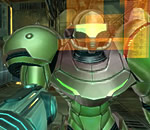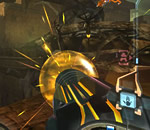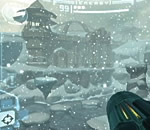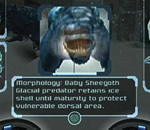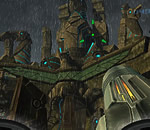Metroid Prime review
I'll be honest. Metroid Prime is my all-time favourite Nintendo GameCube title. The GameCube itself was made for this game. Its road to greatness wasn't without controversy however, but was definitely worth the wait and all the risk.
Back in the day of the Nintendo 64, Metroid fans went without a 64-bit title to call their own. Samus only played a cameo appearance in the original Super Smash Bros. beat 'em up. It looked like Samus' mission in Super Metroid would be her last for a very long time... until Nintendo announced that an American developer - Retro Studios - would be heralding Samus' return for the GameCube.
A classic Nintendo franchise in the hands of a western developer? One that would break the Metroid series into 3D and do to Metroid what Super Mario 64 and The Legend of Zelda: Ocarina of Time did for their respective series? You wouldn't be out of line to show some restraint and concern for this title's chances. After all, it was eight long years between Super Metroid and Metroid Prime's releases, so Nintendo were taking a whole load of major risks with eagerly awaiting fans.
Could Retro Studios rise to the challenge and give us a believable 3D world in the Metroid universe? The answer - oh yes they could. Instead of taking a third-person perspective in either a free-roaming world or a confined 2D space, Retro instead brought us behind Samus' visor and developed a first-person perspective for the bounty hunter.
While this no doubt offered challenges of taking a 2D platformer and adapting it to a completely alien design, Retro soaked up the opportunities this new system presented. A flashy HUD, multiple visors and new weapons were just a few new production values for the Metroid universe. This was not going to be a first-person shooter in the traditional sense.
The story is set between the events of the original NES Metroid and Metroid II, and introduces us to a new threat in the universe - Phazon - a highly radioactive mutagenic substance. Retro seamlessly included the Space Pirates - Samus' leading nemeses, and the Chozo, her benefactors, into the mix. We join Samus as she detects a mysterious distress beacon in orbit above planet Tallon IV. Arriving at what seems a derelict Space Pirate frigate, we're treated to our first look of Samus' shiny 3D appearance as she begins her adventure. There are few introduction cutscenes in a video game that can elicit such excitement - and this one nails it.
I'm actually glad that Metroid as a whole skipped the Nintendo 64, as the GameCube gave Metroid Prime the chance to present a lush, incredibly detailed world. At its core, Metroid has always been about isolation, exploration and intrigue. Instead of wide, open-air environments and mazes leading the player from point A to point B, Retro have crafted a ridiculously detailed and interconnected world of rooms that are literally dripping with inspiration and imagination - there isn't a square inch of detail lacking in the architecture and atmosphere. Essentially we have a satisfying and unique interpretation of the Metroid universe in 3D. An open-air jungle, a frozen icy wasteland, a fiery pit of lava and even a wrecked starship give Tallon IV incredible variety.
Retro's artists have outdone themselves and crafted a visual experience with very few issues. Another facet of the graphics you can't help but marvel at are the simple particle effects. Look up at the sky in the middle of a rainstorm and watch as droplets of water dot Samus' visor with a frighteningly-realistic look. Then jump underwater and hop back up to dry land to see the water streaking off her visor - I've honestly never seen something look so realistic in a game before.
Another crucial piece of the Metroid pie is the audio. The original games utilised fantastic ambient pieces of music to convey the atmosphere and isolation of Zebes and planet SR388. The composer of Super Metroid's soundtrack - Kenji Yamamoto - returned to compose Prime's score and has given us aural bliss. The authenticity is apparent from the moment you hear Prime's title theme kick in. Even to this day the music is a joy to listen to.
One challenge facing Retro was the GameCube's multi-button controller. The GameCube used two joysticks, so should Retro have taken the same approach as TimeSplitters and Halo by using both for movement and aiming? Instead, Retro bucked the trend and developed their own unique style. The Control Stick would be used for movement, while the C-stick would serve as a weapon-selector. Every other button suited its purpose. The game's lock-on function definitely took away any difficulty of scoring hits on hostile targets, but with exploration and treasure-hunting the name of the game, it wasn't a great loss. Beginner players will take some time working out the control system, but in short time it all works naturally.
Most of Samus' classic upgrades and abilities survived the jump to 3D intact. The close-quarters nature of Tallon IV's environments left the Speed Booster and Screw Attack out, but just about every other power-up from Super Metroid is here.
The implementation of Samus' Morph Ball was handled quite well, as the game adapts a seamless third-person perspective when using this feature. Beam weapons are utilised individually this time, and while it's sad to see interesting stacking combinations left out, each weapon serves it purpose and are generally easy to work with. Missile combos do provide an extra layer of complexity, but they tend to act mostly as bonus abilities without dire need of use (well, except for the Super Missile combo).
The Scan Visor is another welcome feature. We don't usually experience a Metroid story in the traditional sense; in effect the player's actions are the story. Metroid Prime is no different, but this time there is a wealth of information available for players to sift through. Creatures, objects, and environmental set pieces can be scanned to learn more about everything around you. Learning about what the Pirates have been up to and the history of the Chozo on Tallon IV is enjoyably presented in this manner.
Back-tracking and treasure-hunting are also here in full force. An optional hint system can poke lost players in the right direction, but switching it off is ideal for those who enjoy a lack of hand-holding. Boss fights are enormous and can drag out to endurance marathons if you don't know what do to (which is good). Bonus art galleries, the original NES Metroid and the ability to use Samus' Fusion suit from Metroid Fusion round out the package.
There is nothing negative I can say about Metroid Prime. Seriously. I have not played another game that combines every element of a video game world quite so seamlessly and without an ounce of frustration in the experience. Any developer in need of inspiration need look no further than Retro Studios' fantastic effort. It was an extremely long wait before we joined Samus for a new mission since Super Metroid, and every gamble Nintendo took with it paid off. The Metroid series and Samus were in good hands for their first 3D outing, and Retro deserves every positive merit and acclaim the game receives.
In 2009, Nintendo released the Metroid Prime Trilogy: a compilation of all three Prime games for the Nintendo Wii, each utilising the pointer control system of the Wii Remote first used in Metroid Prime 3. Coupled together with the Wii's ability to play GameCube games, there is no reason why fans should ever need to miss out on this first-class effort. Excuse me while I take it for a spin again...
Written by Falcon Zero on 1 April 2010.













